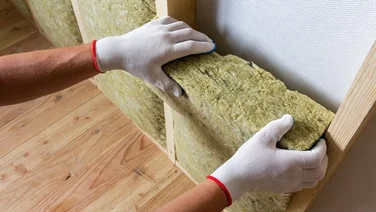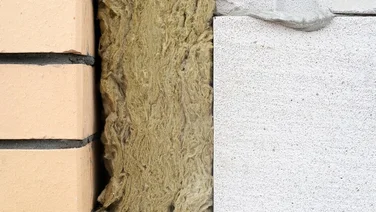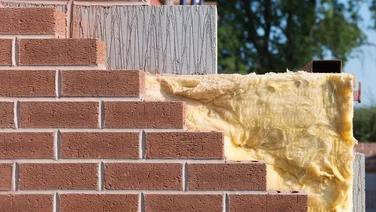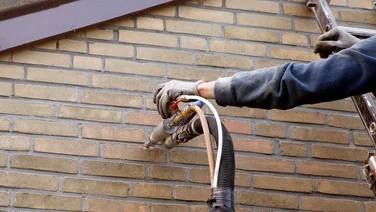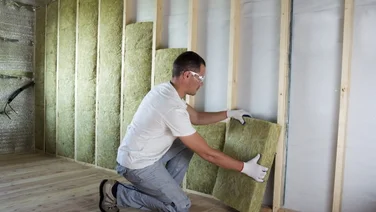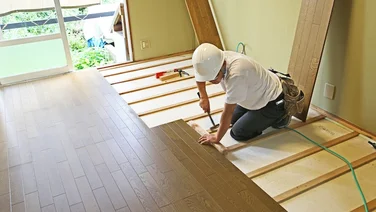- You can save £315 per year by insulating your hot water tank
- It’ll save you 0.5 tonnes of greenhouse gas emissions per year
- This is one of the cheapest ways to cut your energy bills

Getting your pipes insulated is a quick and easy way to reduce energy bills just that – while cutting your carbon emissions at the same time. Other popular measures are spray foam insulation, though this costs a little more.
When it comes to pipe insulation though, there’s good news: it’s cheap, and you can do it all yourself.
If you’re insulating your pipes, you should really insulate your hot water tank and radiators as well – otherwise, you’re just leaving energy savings on the table.
We’ve got you covered on that front too – and if you’re after spray foam insulation, just fill in this quick form to see how much it would cost you.
Get free insulation quotes
Answer a few quick questions, and our trusted installers will send you bespoke insulation quotes – for free.
What is pipe insulation?
Pipe insulation refers to a foam tube that goes around the exposed pipes travelling from your boiler to your hot water tank. It can save you money, and help stop your pipes from freezing.
And what’s more, you can do it all yourself.
All you have to do is measure the pipe, buy the right size of tube from your chosen home improvements shop, and fit it around the pipe.
To do this, just open the tube where it naturally splits, and carefully place it around your pipe. Push on either side of the split, and it should stick together to form an unbroken seal.
You’ll need to cut the tubes to match them to the length of your pipes. Do this with a handsaw, and take the proper precautions.
When you encounter a bend in the pipes, cut a tube diagonally. Place the two parts of the tube on either side of the bend, and push them together. You can then secure them in place with duct tape.
How does it work?
The foam tube will stop the heat coming off the pipe from escaping, meaning your hot water will stay warmer for longer.
This will save money on heating your water, which adds up over time.
It will also help prevent your pipes from freezing, by keeping them warm – but insulation isn’t the be-all and end-all in this case.
To stop a disastrous pipe freeze, you should also keep your heating on at all times. If you’re still concerned about this prospect, contact a professional.
Pipe insulation cost
It generally costs £1.75 per metre to insulate a pipe. All you need to do is buy the right size of foam tube, and fit it round the pipe yourself.
This typically adds up to £20 to insulate the primary pipework – that is, all the pipes between your hot water tank and boiler.
And it’s worth the cost. Pipe insulation will save you about £3 per year on your energy bills, according to the Energy Saving Trust (EST).
This means you’ll have paid off the cost in less than seven years – and if you sell the property, it’s always great to be able to tell prospective buyers about your reduced energy bills.
What type of pipe insulation do you need?
There are various materials used in pipe insulation, but mineral and glass wool, fibreglass, and foam are the most popular types.
These have different benefits and drawbacks, but which one you should get largely depends on the location, temperature, and size of your pipes.
Speak to an expert at your home improvement shop of choice, who’ll be able to give you advice for insulating your specific pipes.
Hot water tank insulation
It also makes sense to insulate your hot water tank. After all, you don’t want any of your precious heat getting away.
And there’s no point in your hot water tank’s room being warm and toasty, at the expense of the rest of your home.
How does insulating a hot water tank work?
It’s as easy as slipping on a jacket – because that’s what it is. You insulate your hot water tank by coating it with a jacket, which you can buy at numerous home improvement shops.
If you already have a jacket around your tank, measure its thickness. If it’s less than 80mm – which is the British Standard – we’d strongly encourage you to replace it with one that is 80mm.
Is it worth it?
Even if your current jacket is 25mm thick, buying an 80mm one can save you £70 per year, according to the EST.
And an 80mm thick jacket, which meets British Standard requirements, only costs around £16.
And if you don’t have a jacket on your hot water tank, or any insulation on the pipes which connect it to your boiler, installing this yourself will typically save you £315 per year.
Plus, it’ll save 510kg of CO2. For the average person in the UK, that’s an 8% reduction of your carbon footprint – all while saving money at the same time.
Hot water tank insulation grants
Hot water tank insulation was one of the energy-saving home improvements covered by the Green Homes Grant, which could’ve saved you two-thirds of its cost.
Unfortunately, this government scheme was chronically mismanaged and finished a year early, in March 2021.
Radiator insulation
Insulating your radiators is another easy, cheap way to save money on your energy bills and cut your carbon emissions by making sure heat doesn’t leave your home.
Here’s how to do it.
How does insulating a radiator work?
For radiators on external walls, you can buy reflector panels to stick to the wall.
These panels stop heat from escaping your home, bouncing it back into the room instead.
They also work a lot better than putting insulation directly on your radiator, which won’t as much spread heat around your home as potentially set it on fire.
If you have external solid walls that aren’t insulated, reflector panels could benefit you enormously.
You should also consider applying for a Green Homes Grant, which could save you two-thirds on the cost of getting them insulated.
Is it worth it?
Reflector panels should only cost only £6-7 at a home improvement shop, and will typically allow you to save £25 per year on your energy bills, according to the Energy Saving Trust.
So yes, it’s absolutely worth it.
Summary
Insulating your pipes, hot water tank, and radiators makes financial sense, and it’s good for the climate.
It’s a win-win in any circumstances, and with the Green Homes Grant coming into force later this year, there’s never been a better time to insulate your heating system.
You’ve read all the information you need, so get cracking on keeping all your heat where it should be: in your home.
And if you’re tempted by the idea of spray foam insulation, just fill in this form, and see how much you can get it for.

